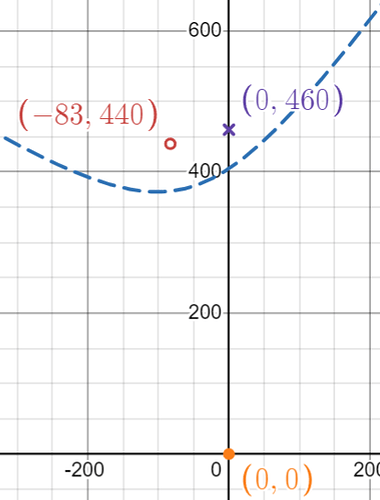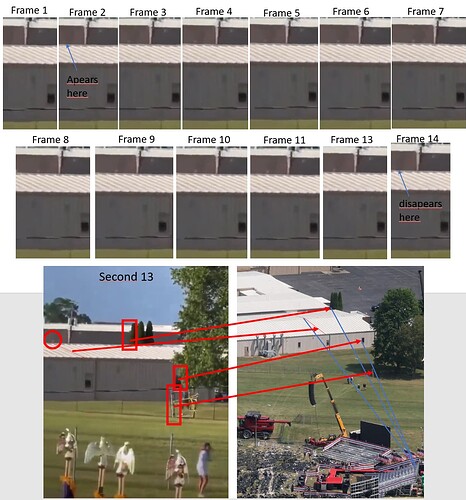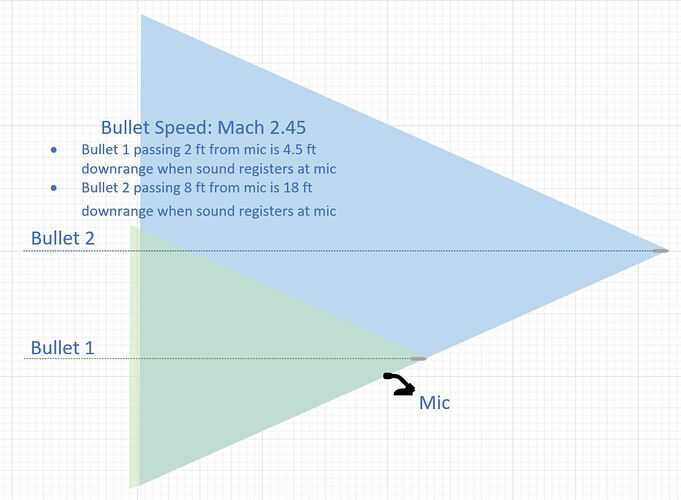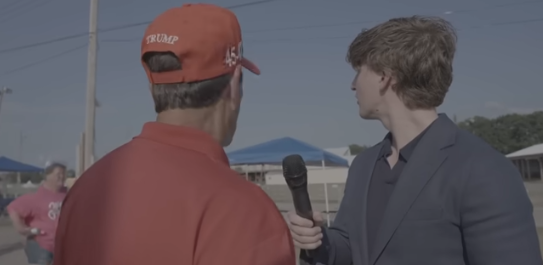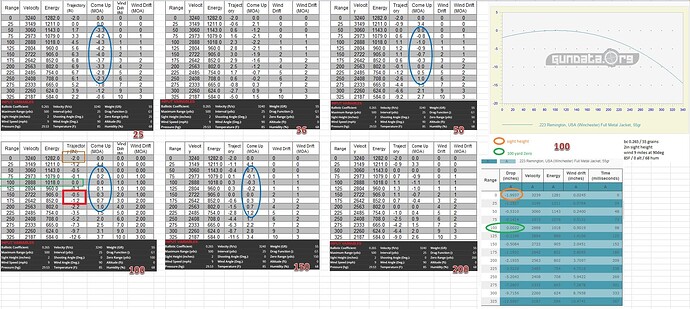THERE WAS A 2nd SHOOTER
Based on the timing of the “sonic boom” and report of 1st shot at Trump’s mic — time difference 0.22 secs — the muzzle of the gun had to be 417’ ± a few feet from Trump. That does NOT get you to where Crooks was. It gets you EXACTLY to the front edge of that building.
Given that the 1st floor windows were too low to shoot line of sight to Trump, and those windows seem to have been “cleared” by law enforcement — the DJ video shows that — I think 2nd shooter was in the ceiling of the building that Crooks was on, approximately at but several feet above the height of the top of the 2nd window from the right.
There seems to be something wrong with your calculation. You listed 1203.6 ft/sec as the speed of sound, but I calculate it at somewhere between 1161 and 1168 ft/sec.
Speed of sound in dry air = 331.3 + .606T (m/s). The temp was 93ºF at 6pm on 7/13 or 33.9ºC, so that yields 331.3+.60633.9 = 351.8 m/s in dry air.
Assuming the humidity was between 50 and 100%, you can apply the correcting factor (1+.0124*H) so that would be 1.0062 at 50% and 1.0124 at 100%). That yields 351.8 * 1.0062 = 354 or 351.8 x 1.0124 = 356.2.
Converting to fps that gives a range of 1161.4 to 1168.1 m/s which is SIGNIFICANTLY (3.5%) less than your estimate.
Based on your timings of 0.22 secs between sonic boom and report at Trump’s mic, and using the 50% humidity, and the assumption of 3000 fps muzzle velocity for 5.56 NATO rounds out of a standard 16" barrel AR-5 platform, that implies a distance of only 417 ft from Trump to muzzle. From Trump’s location, that gets you to the second window from the right on the ONE-story building that the shooter was ON TOP of. But it doesn’t get you to shooter’s muzzle location which was approximately another 45 ft away from that at the apex of the roof. Furthermore, that window is in a direct line from shooter to Trump.
Unless my calculations are wrong, this implies a shooter from the ONE story building, 2nd window from right.
Also, on the videos I have seen, and you have showed, it is the 1st shot that hits Trump’s ear, as he immediately grabs his ear, sees the blood and drops down before we hear all the subsequent shots.
You also showed a cell phone video showing that shooter’s shoulder did not move at all upon 1st shot firing. That also clearly implies he was not shooting at that moment.
Obvious other questions are where are the shells? Where are the bullets? Where are the rounds shot by counter snipers? Where are the rounds that hit the shooter?
Google Earth overview
